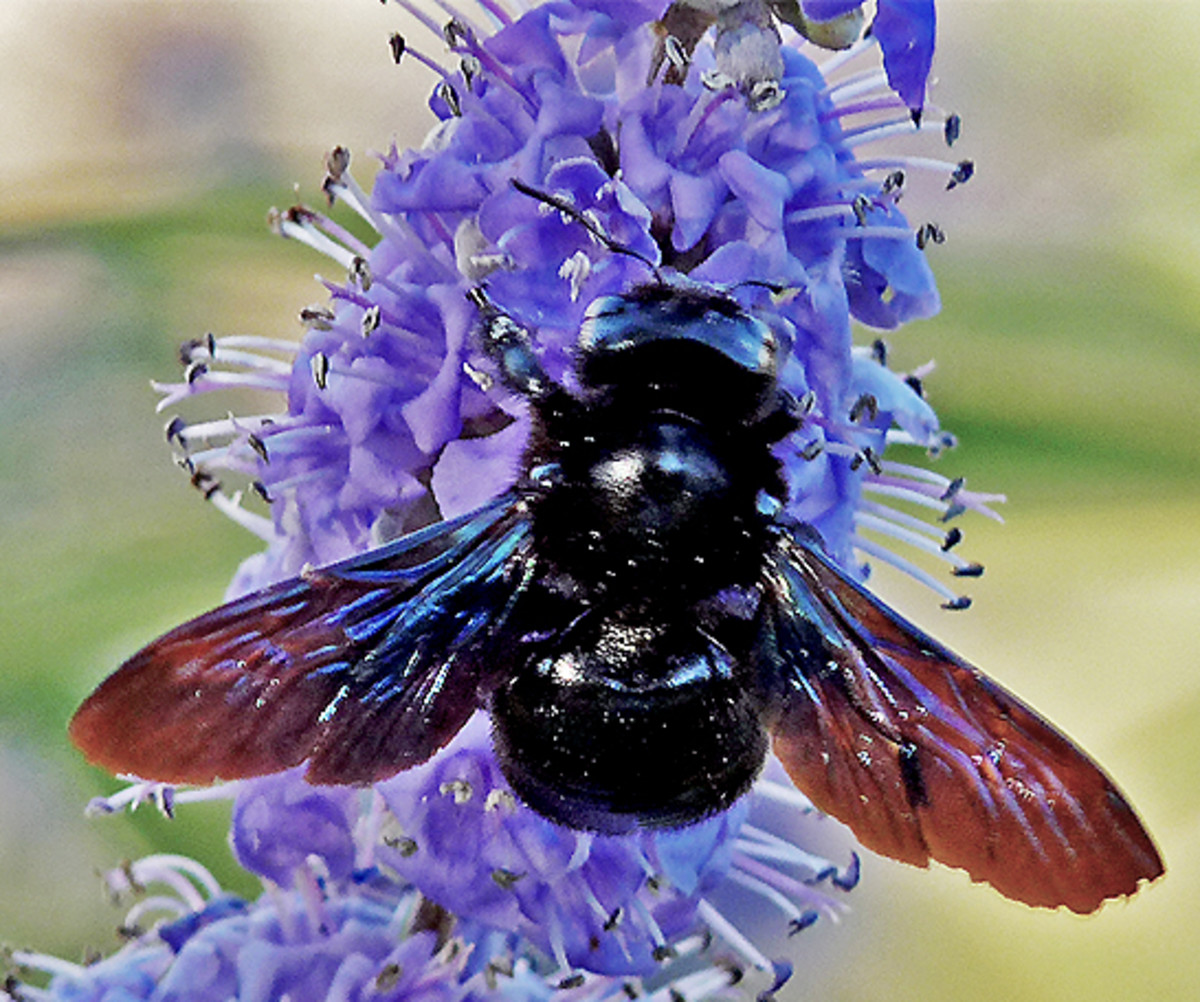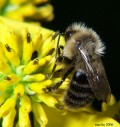A Swarm Landing on My Hive! But Is It Bees Swarming or Bees Robbing?
What attracts a swarm to a hive?
We have a hive which has attracted a swarm of bees without any effort, two years in a row. I hear that's unusual. But apparently before the varroa mite became common, anyone could easily set out an empty hive and have a swarm move in. It seems quite reasonable they'd prefer it to a roof, house siding, birdhouse, or some of the other strange places bees decide to live. Well, our hive seems to be attractive to bees. But this year we actually got to see the swarm arrive.
Just to prove I didn't attract a swarm due to my wonderful beekeeping skills, I should also admit I thought a swarm was moving into our other hive too. It turned out to just be bees robbing. There were a few differences I noted in hindsight, so I’m writing about them for the interest of any other beekeepers or just bee lovers.
The attractive beehive
To a human, it looks quite awful. It’s an old Langstroth hive; I was given it by a beekeeper who got it from another beekeeper. The combs in it are black with use (some beekeepers think that’s great, others think it’s terrible). But the bees must like it because a swarm has moved into it two years in a row.
I guess our yard must be the bee equivalent of a neighborhood with good schools, though I’m no great gardener, and most of the flowers available are dandelions. Maybe it’s our gardening neighbors, who love having bees in the neighborhood.
I do think the bees should be more picky, though, and inquire about the conditions under which the previous tenants quit living there. Having a hive open for swarms two years in a row means the previous bees died two years in a row. (Most beekeepers would agree that’s a horrible record.) I would assure the bees, though, that it wasn’t murder, or intentional neglect; probably just starvation of a weak colony, since in both years the bees survived into the spring.
Langstroth hive
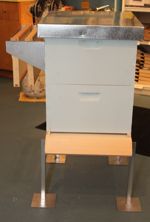
The bee swarm moves in
In early May I noticed activity around the hive when there hadn’t been any for weeks. I didn’t think their activity looked like robbing, but even though a swarm moved in last year, I thought surely that was too unlikely to happen again. But by evening, I was convinced it really was a swarm.
At first it was a few bees that looked like they were checking out the property. A bit later, there were more bees flying around, and for a couple hours, there were always one or two dozen bees flying around outside, while other bees were crawling into the hive, and very few ever coming out.
We never did figure out for sure where the bees were arriving from. It was sort of like a bus stop when a school or workplace a short distance away lets out – you don’t see a crowd coming at any one time, but if you look at the increased activity and the flow of people coming on foot and leaving on buses, you can tell something’s going on. If you multiply a couple hours by five or so bees entering the hive every second, you get the impression of a good-sized swarm.
Observations: queen pheromone and maybe drones
My husband wasn’t there at the very start, but he noticed the first bees he did see going in seemed bigger than later bees. I can’t think of any explanation for that unless drones arrive before the worker bees; I’d appreciate any comments from anyone who might know.
I saw one or two bees with tails up, fanning the queen pheromone to others. But there weren’t bunches of them doing that as I have seen when installing package bees. One thing that made me think the bees were planning to stay was seeing them clean dead bees out of the hive; dragging them to the front porch and dropping them off the edge. Bees like a clean (by their standards) home, but bees not planning to live there just take the honey and get out, often leaving bits of beeswax strewn around.
It was very nice to get free bees (a package of bees costs around $80, and swarms can be stronger than package bees), it made me feel happy to have a busy hive again, and I really felt privileged to have seen the bees move in, when others with many more hives have never seen it happen. Of course, having the hive right in our back yard is a major advantage for seeing what happens.A variety of top bar hives
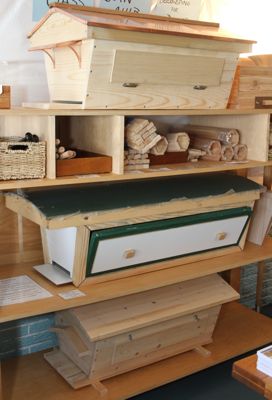
You get more (robber) bees with honey than vinegar
Our other hive is a top bar hive (which should feel much more homey to bees from what you read about them.) This week I thought I was seeing a swarm move into it, too, but if so they didn’t stay and they took the honey with them.
That hive was empty probably because something happened to the queen in the early spring. It seemed to be doing very well as the weather warmed, but then the hive slowly declined just when it should have been exploding with new bees. I didn’t open it for a long time, not wanting to stress the bees, just in case the queen was still there, while we were still having cold days. Finally, last week I opened it and found a lot of honey and pollen still in the brood combs. I took some out (leaving drips of honey on the hive floor) but as a few bees (maybe just visitors) were wandering around, I left the rest till when I had my bee suit on. I also opened up entrances that had been closed for the winter.
Warre hive
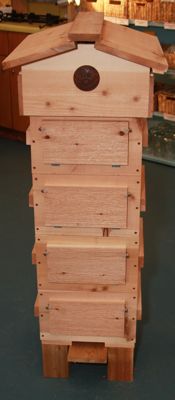
A second swarm moves in - or not...
Two days later, there was suddenly a lot of activity around the hive. As before, it seemed to be bees going in and not coming out. Furthermore, they were cleaning out dead bees – I could hear them dropping from the “front porch” onto dry leaves below. I still can’t see any reason why robbing bees would have done that.
I had to leave, and when I came back in the afternoon, things looked different. There were wax cappings, and dead bees, at the front of the hive, and no cleaning efforts going on. Bees were both coming and going. Bees were still dropping from the front porch, but it seemed to be either a couple bees fighting, or one bee that would fall down and then fly away – I had heard that robbing bees stuff themselves with so much honey they do need extra help taking off.
The next morning, I looked in the hive, and there were no bees to speak of, and the capped-off honey I had seen was gone too.
I can't decide whether I think there really was a swarm moving in to begin with, but maybe other local bees started robbing the place and the swarm decided it wasn't worth staying there - and joined in the robbing before they left, or whether it was only ever local bees on a robbing spree. Of course the former is wishful thinking, because I do wish it, but it does seem at least as likely as a swarm having moved into my other hive two years in a row.
Robbing behavior that looked a lot like swarm-moving-in behavior
At home in the bee hive
Even while the hive was being robbed, another beekeeper called to ask if I wanted a small swarm he’d captured. I called back to say, unfortunately, yes, it seemed I had a nice empty hive just waiting.
He came over and dumped the swarm in. So now I definitely have bees in both hives. They buzzed around for a bit, but seemed much quieter than the bees the previous day, and quickly acted like bees at home. They are welcome, and I wish them well in their new house.

